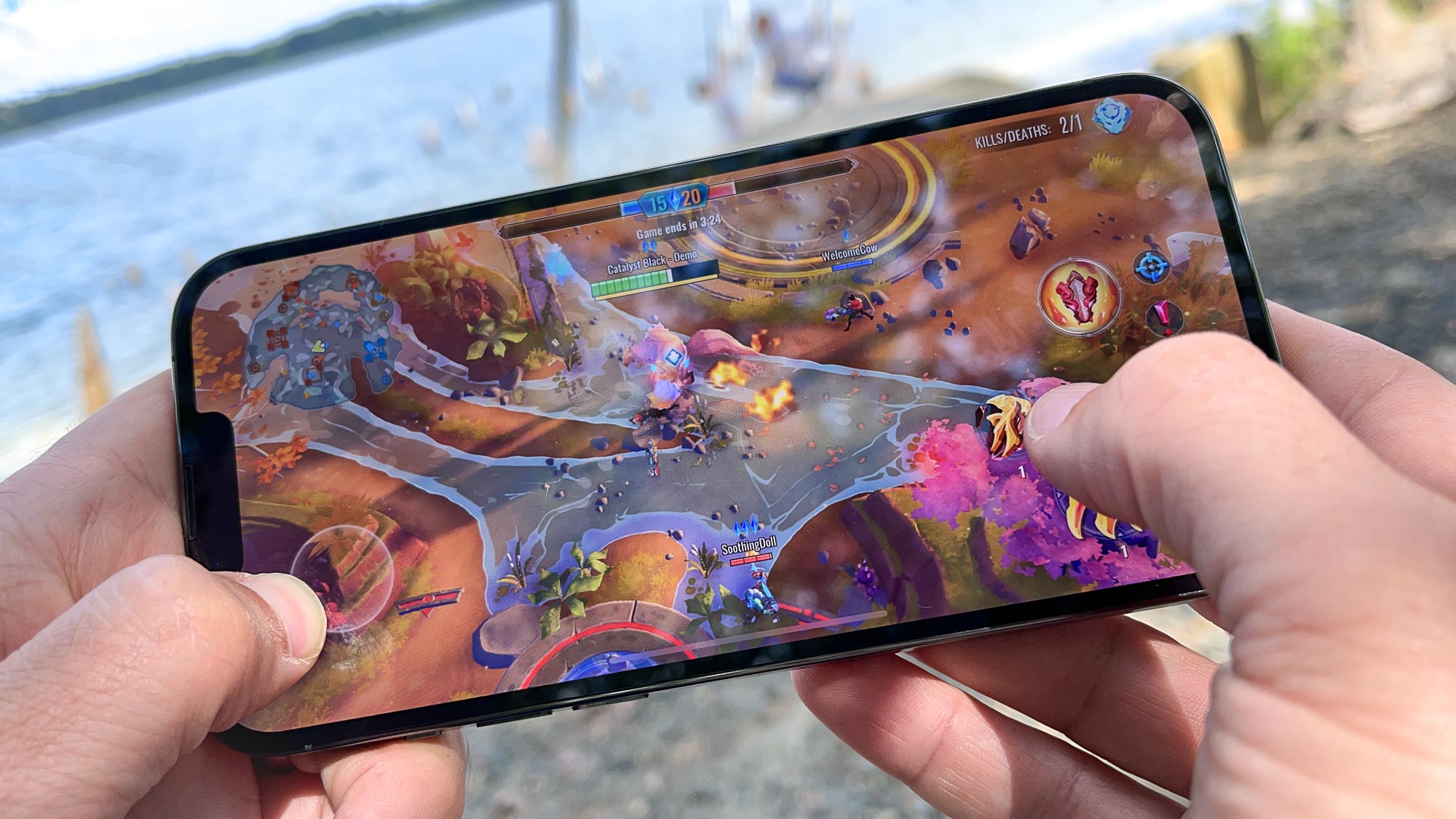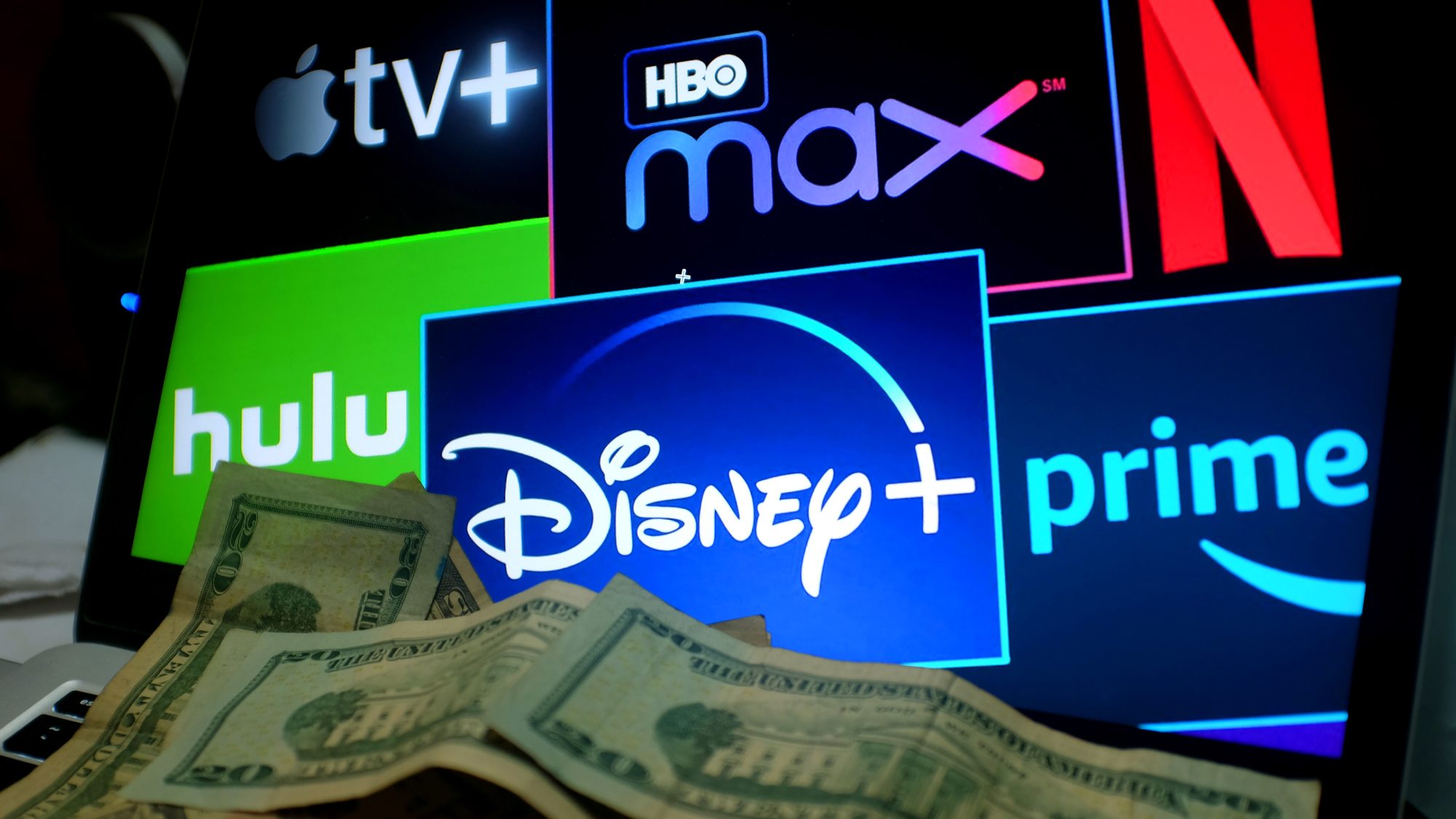iPhone 13 benchmarks — Apple just blew away Android phones
Apple's new A15 Bionic chipset in the iPhone 13 leaves the Android competition in the dust

All four of our iPhone 13 reviews are in, as are our benchmark results from testing. Apple promised gains with the new A15 Bionic chip, and while it's an iterative upgrade over last year's A14 Bionic in most respects, it crushes the Qualcomm Snapdragon 888 that powers several of the best Android phones.
From synthetic benchmarks to real-world testing, the iPhone 13 series (especially the Pro models) pulled even further ahead from the best chips Apple's competitors use. In some cases, the gap is incredibly wide. Qualcomm has its work cut out for it with the next-generation 800-series Snapdragon, not to mention the Tensor chip Google is working on to power the Pixel 6.
- See our iPhone 13 Pro Max review and iPhone 13 Pro review
- Be sure to check out our iPhone 13 review and iPhone 13 mini review
- Plus: Microsoft Surface Duo 2 is a chance at redemption — and I hope it works
Apple even said that the A15 Bionic's GPU in the Pro models would be 50% faster than the competition. (The best rival graphics engine right now is the Adreno 660 in the Snapdragon 888.) In our testing, that proved true in many cases. The A15's performance hike over iPhone 12 phones is middling, but Apple upgraded the Neural Engine on its chipset this year. This has allowed for the new Cinematic mode and Photographic Styles, which heavily leverage AI to do their thing.
Measuring a phone's performance goes beyond raw numbers. It's more about what the phone can do in a real-world setting, and in that regard, the iPhone 13 certainly delivers. But those raw numbers do tell an important story, so here's how the iPhone 13 stacks up to what's already out there, for both the Pro, standard and mini models.
iPhone 13: Geekbench results
Geekbench 5 measures the CPU's overall performance, broken out into single- and multi-core results.
| Row 0 - Cell 0 | Processor | Single core | Multicore |
| iPhone 13 Pro | A15 Bionic | 1733 | 4718 |
| iPhone 13 | A15 Bionic | 1688 | 4436 |
| iPhone 12 Pro | A14 Bionic | 1595 | 3880 |
| iPhone 12 | A14 Bionic | 1593 | 3859 |
| Galaxy S21 Ultra | Snapdragon 888 | 1123 | 3440 |
| Galaxy S21 | Snapdragon 888 | 1048 | 3302 |
| Galaxy Z Fold 3 | Snapdragon 888 | 1107 | 3418 |
| OnePlus 9 Pro | Snapdragon 888 | 1126 | 3685 |
| Asus ROG Phone 5 | Snapdragon 888 | 1127 | 3672 |
| Pixel 5 | Snapdragon 765G | 596 | 1617 |
Geekbench 5 scores are arbitrary in a vacuum, but they help measure a device's performance in context to other devices — even if you get slightly different scores every time you run the test.
As you can see, the iPhone 13 Pro, iPhone 13 and iPhone 13 mini models are quite a ways ahead of the Snapdragon 888 and Snapdragon 765G. More than a thousand points separates the iPhone 13 Pro from the two most powerful Android phones we've ever tested, the OnePlus 9 Pro and Asus ROG Phone 5. That's not to mention that the new iPhones pull well ahead of the Galaxy S21, Galaxy S21 Ultra and Galaxy Z Fold 3, the best that Samsung has to offer.
Get instant access to breaking news, the hottest reviews, great deals and helpful tips.
And we'll just skip over that delta between the iPhone 13 and the Pixel 5. Let's hope the Pixel 6 helps Google catch up a bit.
iPhone 13: Graphics benchmarks
A lot of people play games on their phones, with the iPhones leading the charge. For the following benchmark, we use 3DMark's Wild Life Unlimited test, which produces a score and average frames per second. It's meant to provide a realistic impression of a phone's gaming performance.
The A15 Bionic pushes the boundaries on mobile gaming, as you'll see in the results below.
| Row 0 - Cell 0 | Processor | Score | Frames per second |
| iPhone 13 Pro | A15 Bionic | 11,693 | 70 |
| iPhone 13 | A15 Bionic | 9331 | 56 |
| iPhone 12 Pro | A14 Bionic | 8619 | 51 |
| iPhone 12 | A14 Bionic | 8555 | 51 |
| Galaxy S21 Ultra | Snapdragon 888 | 5739 | 34 |
| Galaxy S21 | Snapdragon 888 | 5805 | 35 |
| Galaxy Z Fold 3 | Snapdragon 888 | 5622 | 34 |
| OnePlus 9 Pro | Snapdragon 888 | 5755 | 35 |
| Asus ROG Phone 5 | Snapdragon 888 | 5806 | 35 |
| Pixel 5 | Snapdragon 765G | 1160 | 7 |
Like Geekbench, the Wild Life Unlimited score is meaningless on its own and should only be used for comparison to other devices. However, the important metric is the average FPS, which is a real-world benchmark.
The iPhone 13 Pro with its five-core GPU smokes the competition, even its iPhone 13 sibling and that phone's quad-core GPU — the extra core seems to really matter, based on these results. But look at how far ahead the A15 Bionic is compared to the Snapdragon 888 phones, which hadn't caught up to the A14 Bionic from last year.
The iPhone 13 Pro netted double the Snapdragon 888's best framerate in our testing, which is insane. The Wild Life Unlimited benchmark is pretty hard on phones. (I didn't even include the newer Wild Life Extreme Unlimited, which we've only recently started using in our testing.) So seeing the iPhone 13 Pro fare so well is a bit mind-boggling.
iPhone 13: Video encoding speeds
Another real-world application to gauge a phone's performance is our Adobe Premiere Rush test. This tasks a phone to transcode a 4K video file to 1080p. The results below are listed as minutes:seconds.
| Row 0 - Cell 0 | Processor | Time (Mins:Secs) |
| iPhone 13 Pro | A15 Bionic | 0:26 |
| iPhone 13 | A15 Bionic | 0:26 |
| iPhone 12 Pro | A14 Bionic | 0:27 |
| iPhone 12 | A14 Bionic | 0:26 |
| Galaxy S21 Ultra | Snapdragon 888 | 1:03 |
| Galaxy S21 | Snapdragon 888 | 1:03 |
| Galaxy Z Fold 3 | Snapdragon 888 | 0:50 |
| OnePlus 9 Pro | Snapdragon 888 | 1:03 |
| Asus ROG Phone 5 | Snapdragon 888 | 1:00 |
| Pixel 5 | Snapdragon 765G | 2:52 |
Year-over-year, there's functionally no difference between the iPhone 13 and iPhone 12 — maybe a second here or there. However, Apple's lead over Qualcomm remains, performing the transcode in half the time that most of the Snapdragon 888-equipped phones needed.
Transcoding is a CPU-intensive task, and it makes sense that Apple's phones would lead the way on this particular benchmark. Apple has said that you can perform a full video workflow from shooting to rendering on the iPhone 13. The iPhone 13 can also record in the ProRes format natively, which is what many professionals use.
The poor Pixel 5 needed triple the time required by the other Android phones.
iPhone 13 performance outlook
Another year, and Apple has further cemented its lead over Qualcomm. Not only does the iPhone 13 series have excellent battery life (excluding the mini, which is below average) and stellar cameras, but it's the most powerful suite of phones you can buy. If having the best performance is a top priority for you, then you'll want to look at the iPhone 13 or iPhone 13 Pro/Pro Max. The phones went on sale on September 24.
Let's hope Qualcomm's next high-end Snapdragon or Google's Tensor can narrow the gap with what Apple has built.
- The best phones you can buy

Jordan is the Phones Editor for Tom's Guide, covering all things phone-related. He's written about phones for over six years and plans to continue for a long while to come. He loves nothing more than relaxing in his home with a book, game, or his latest personal writing project. Jordan likes finding new things to dive into, from books and games to new mechanical keyboard switches and fun keycap sets. Outside of work, you can find him poring over open-source software and his studies.
